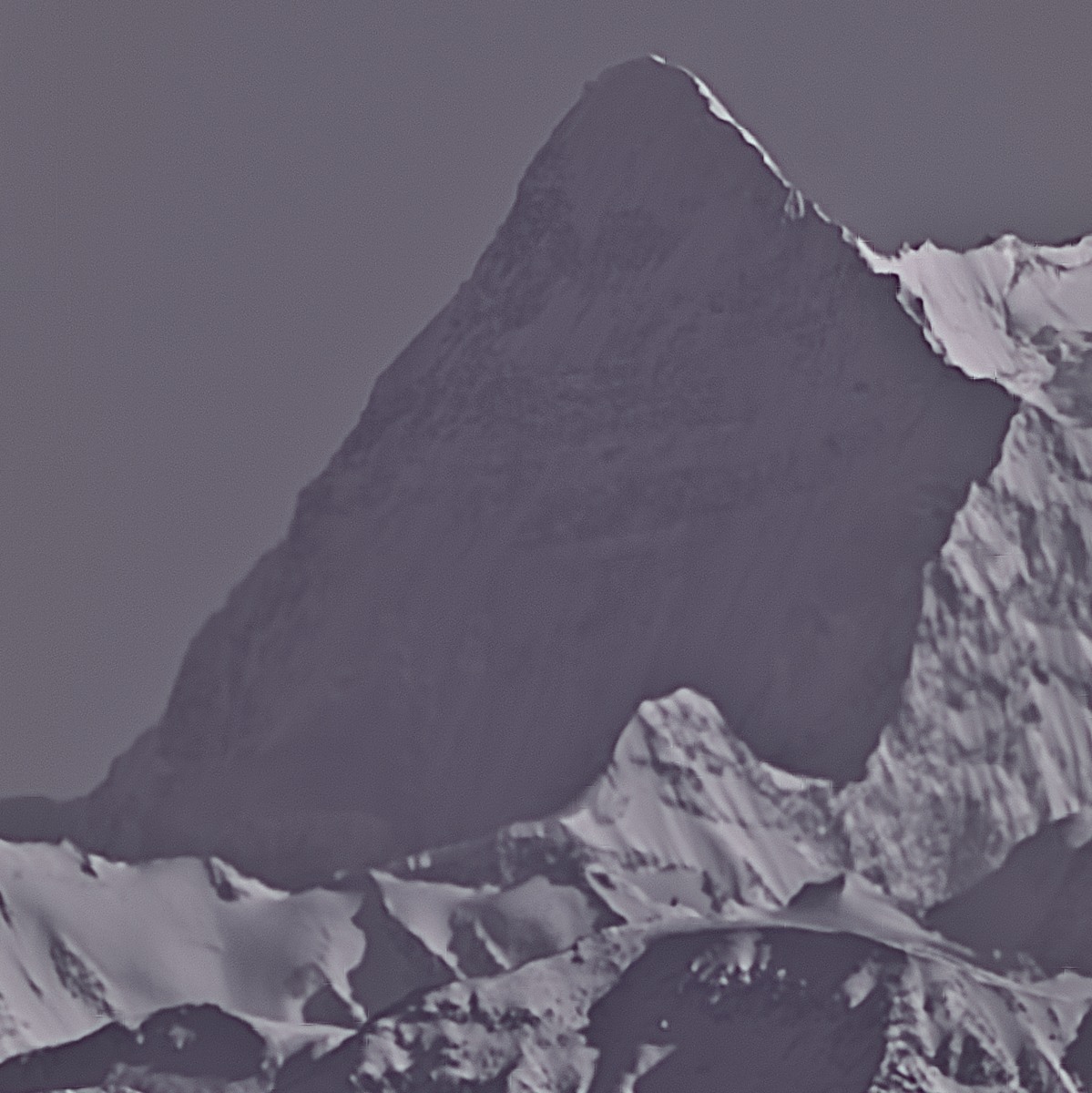My recent technical foray into asto cam imaging with a small sensor and lucky imaging made me wonder what a similar technique as used on the moon could do for long-distance landscapes when combined with IR imaging. The three high mountain peaks of the Alaska range, Mont Hayes, Hess Mountain and Mont Deborah more than 150km south of Fairbanks seemed like a suitable target. The day was clear, but with quite a bit of haze almost hiding the mountains. Here is a cropped view from the webcam at the Geophysical Institute, simulating the view with a normal lens. The arrow points to Hess Mountain. Mont Hayes on the left side and Mont Deborah next to Hess Mountain at the right side.
#1
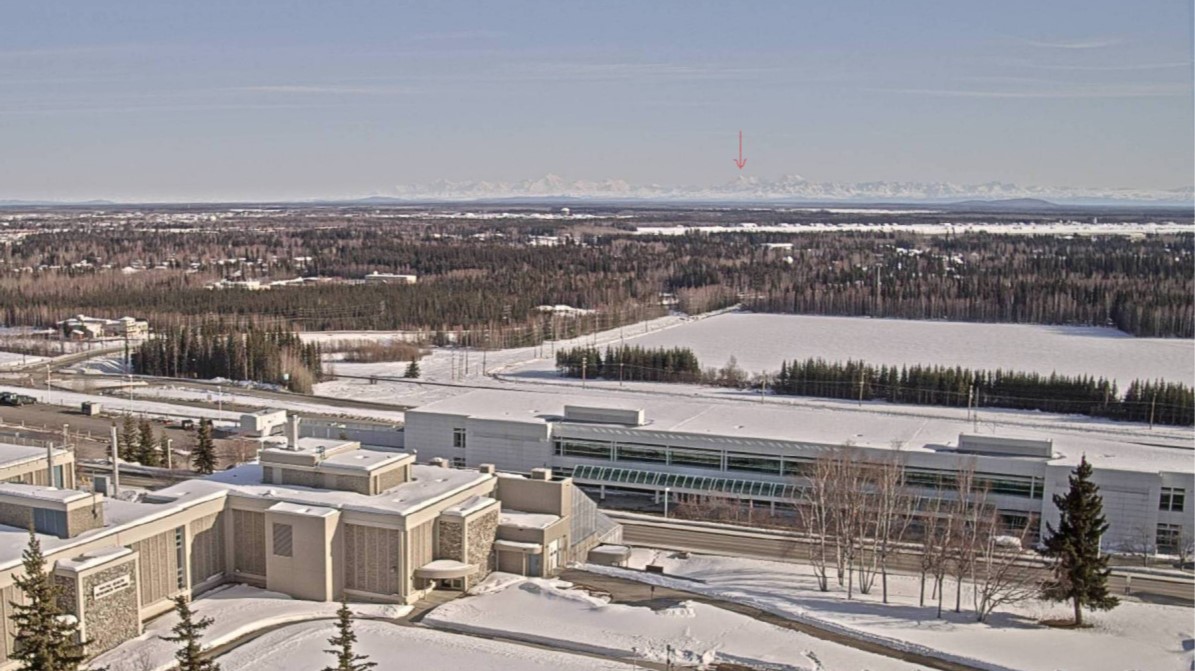
So I mounted all the lens power I have, which is the 300mm f/4 PF with TC-14E + TC-20E III stacked. First a full frame of Hess Mountain from D500, contrast turned all the way up in CNX-D, and with as much sharpening that I could apply without creating too much artifacts:
#2
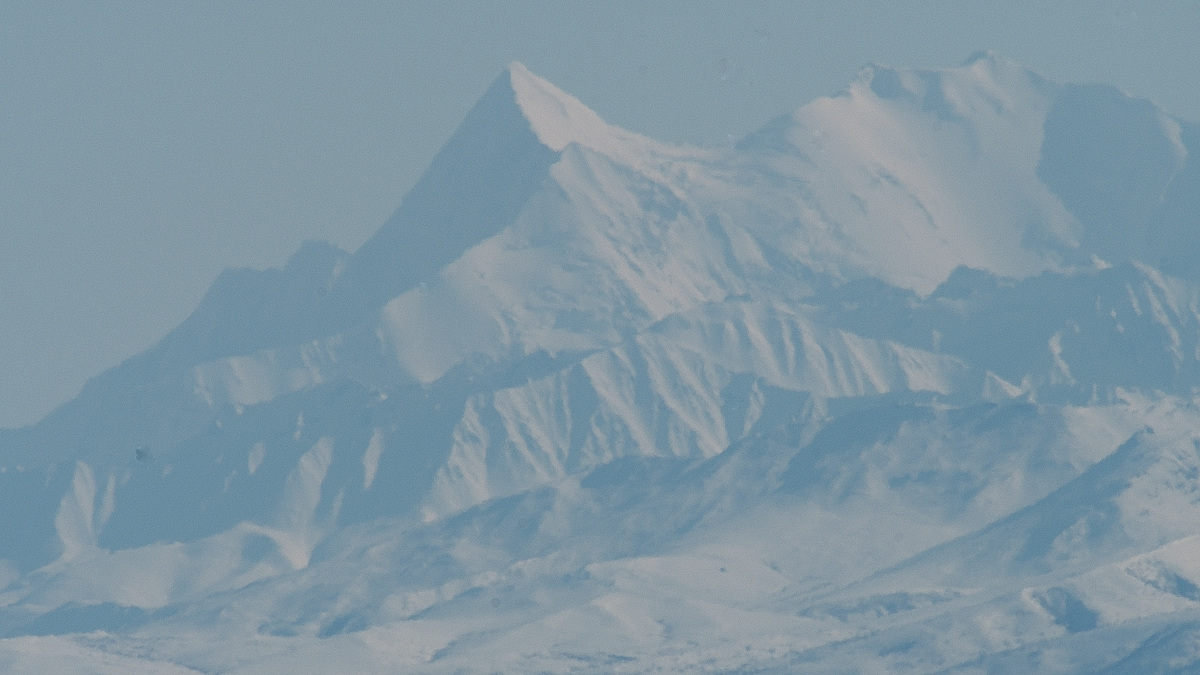
A crop of this frame similar to that used for the asto cam reveals problems with optical quality of the air between the lens and target:
#3
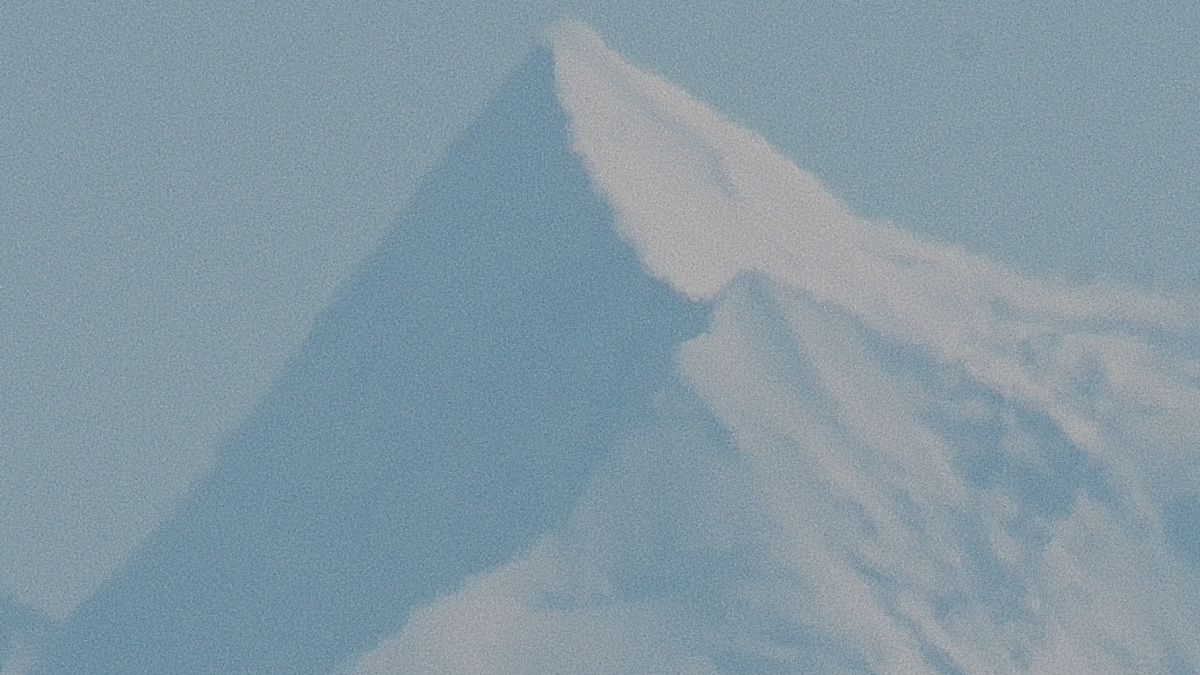
The the same frame of Mont Hess captured with the ASI678MC astrocam at a 2um pixel pitch with a 685nm IR pass filter. Stack of the best 25% of 2000 video frames. The angle of view is about 0.6° which is about the same as a 4000mm lens on a full frame body.
#4
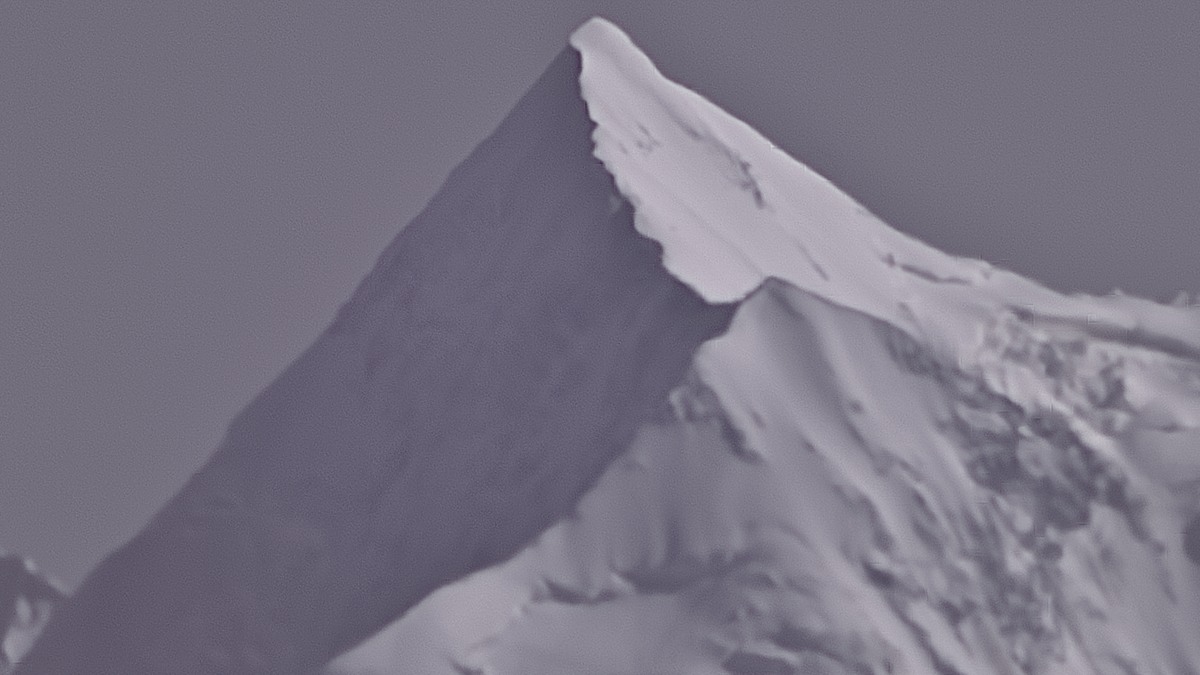
A view of the 4216m tall Mont Hayes with similar technique also demonstrates how the IR pass filter cuts through the haze. The lucky imaging can only do so much though. There are notable parts that are more blurry than others.
#5
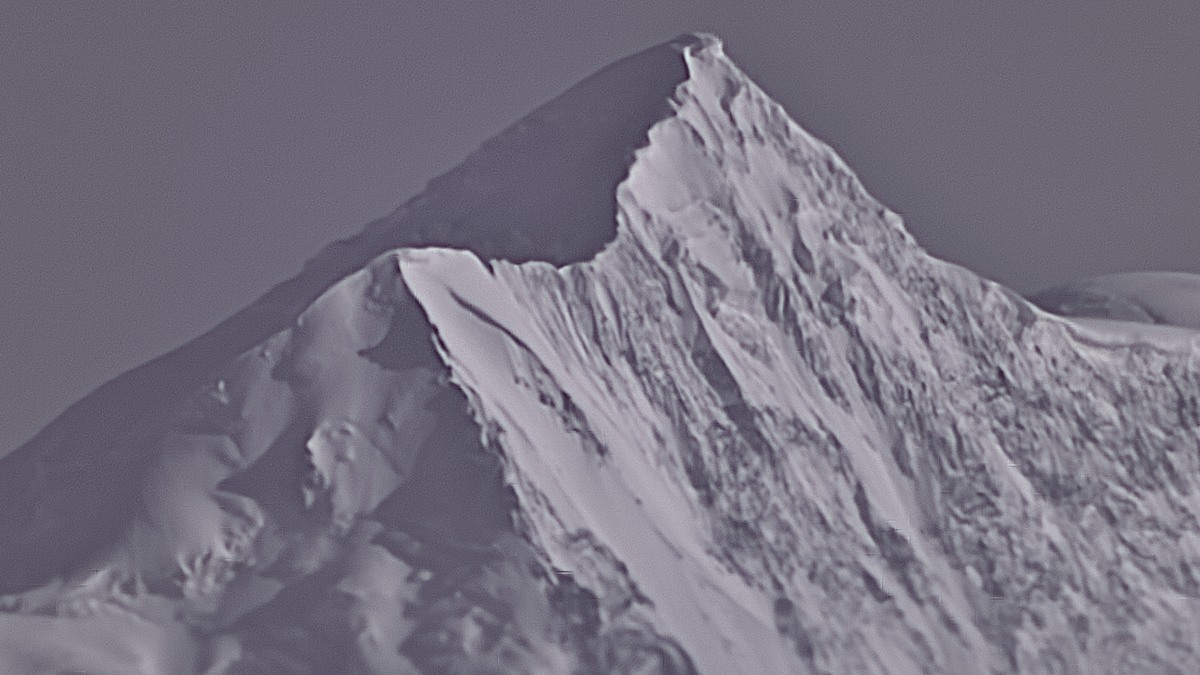
Then finally a stich of two horizontal frames of Mont Deborah's peak to reveal a little more of this 3761 m tall mountain. The elevation at my vantage point in Fairbanks is only about 200m.
#6
